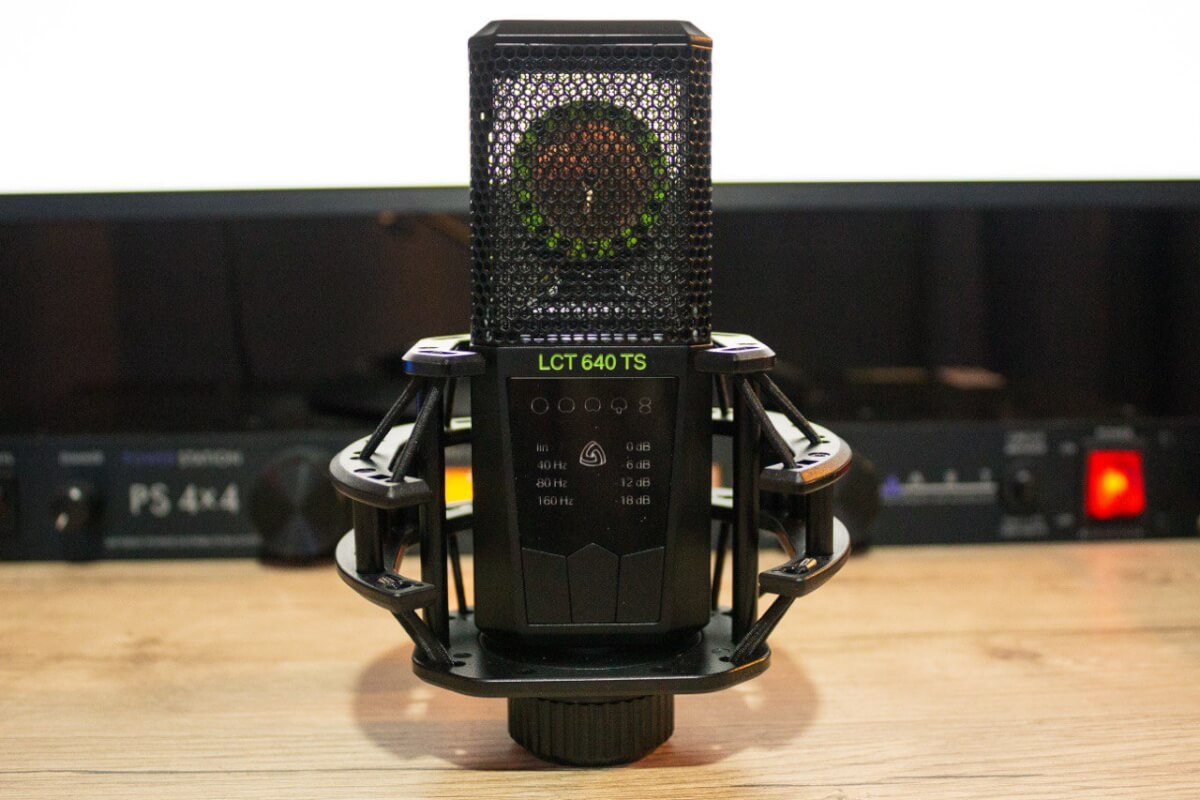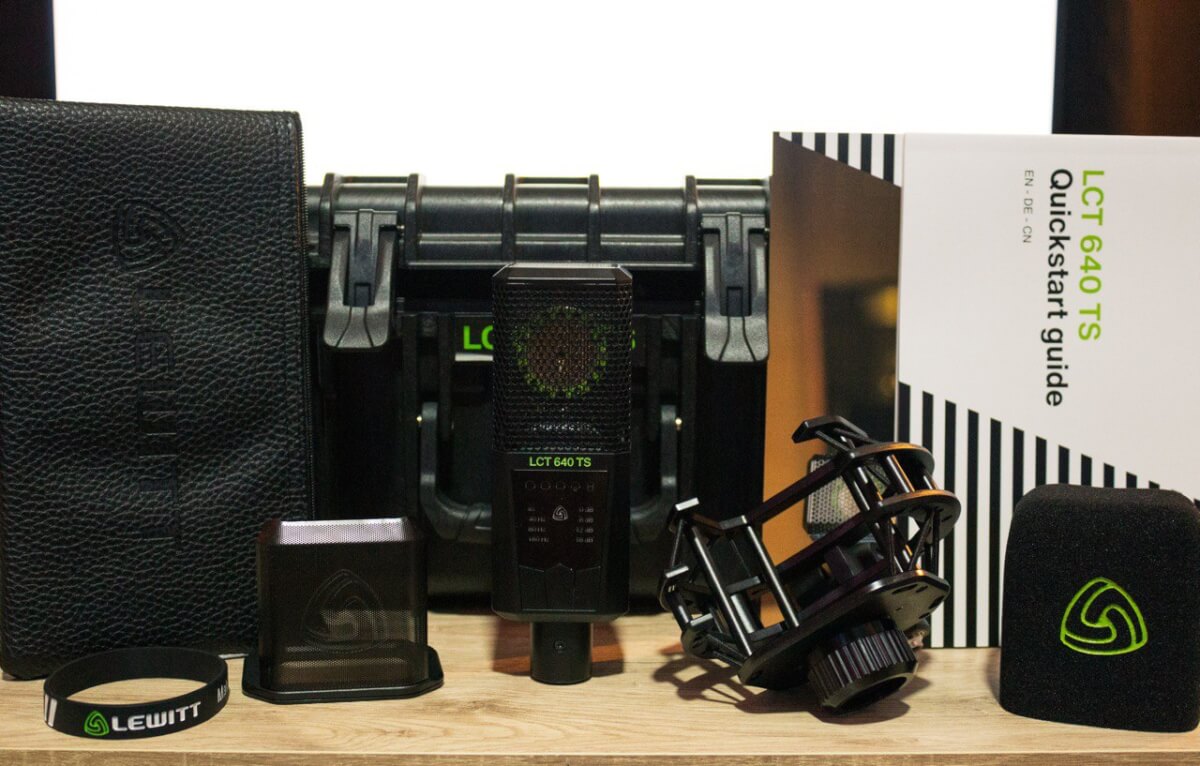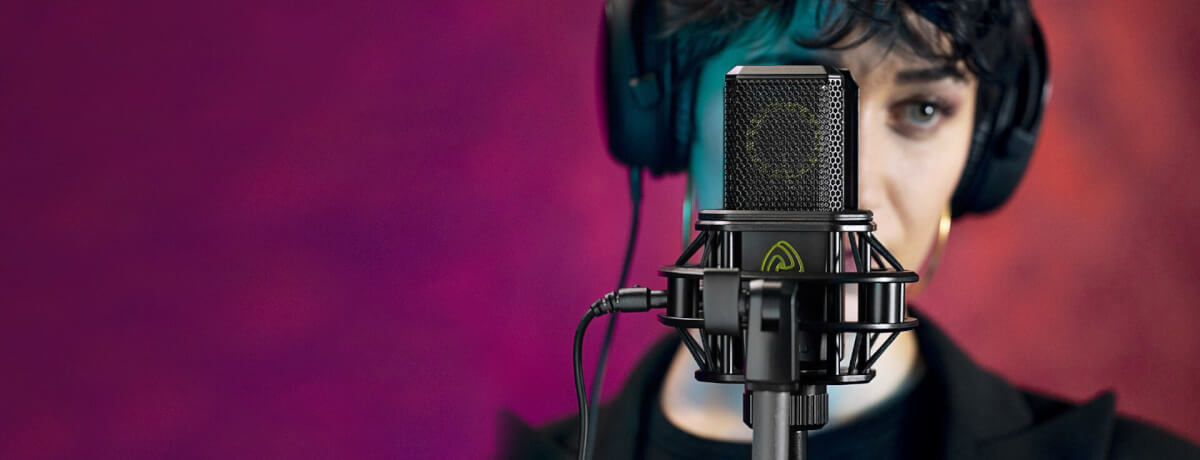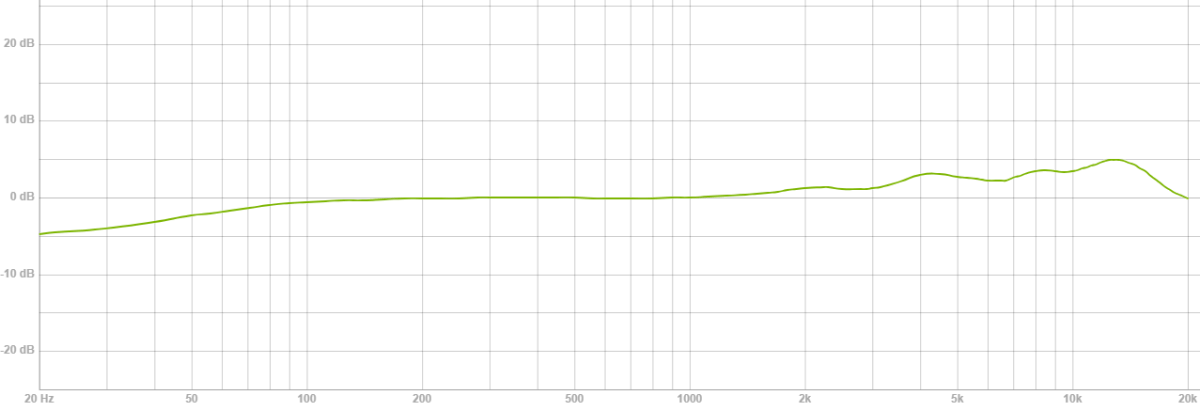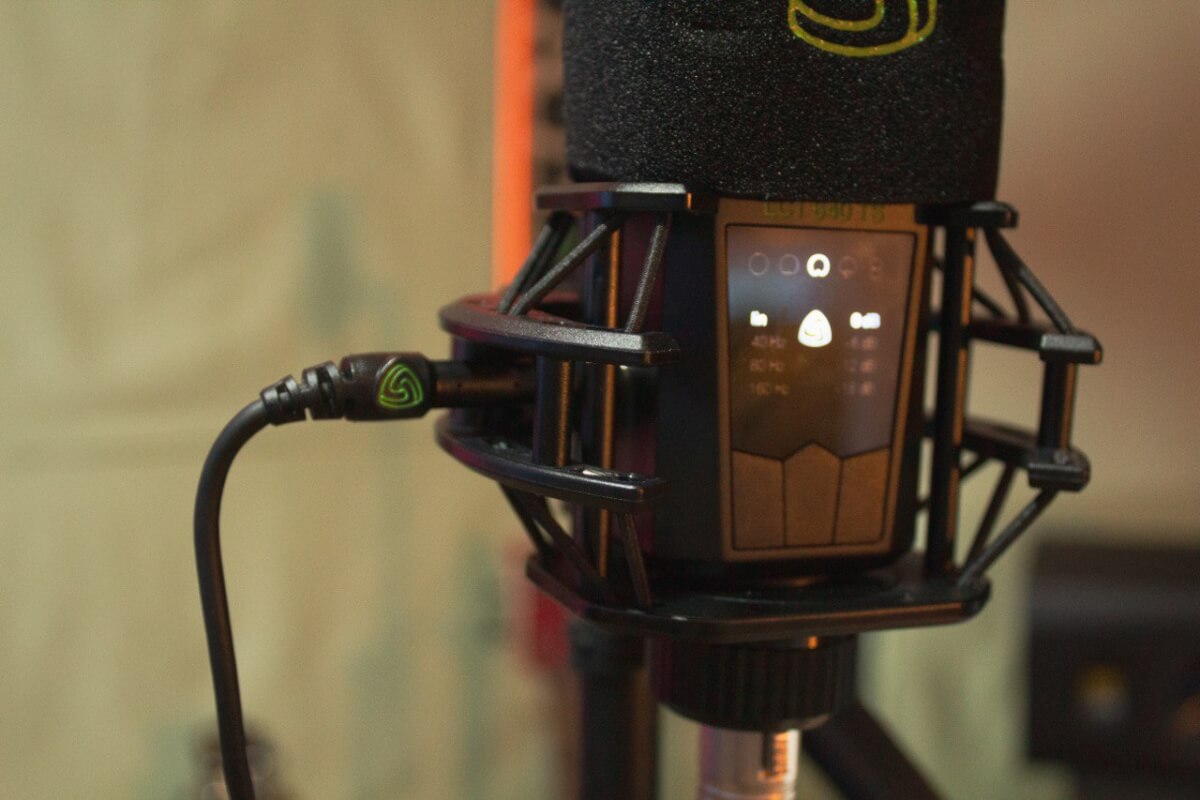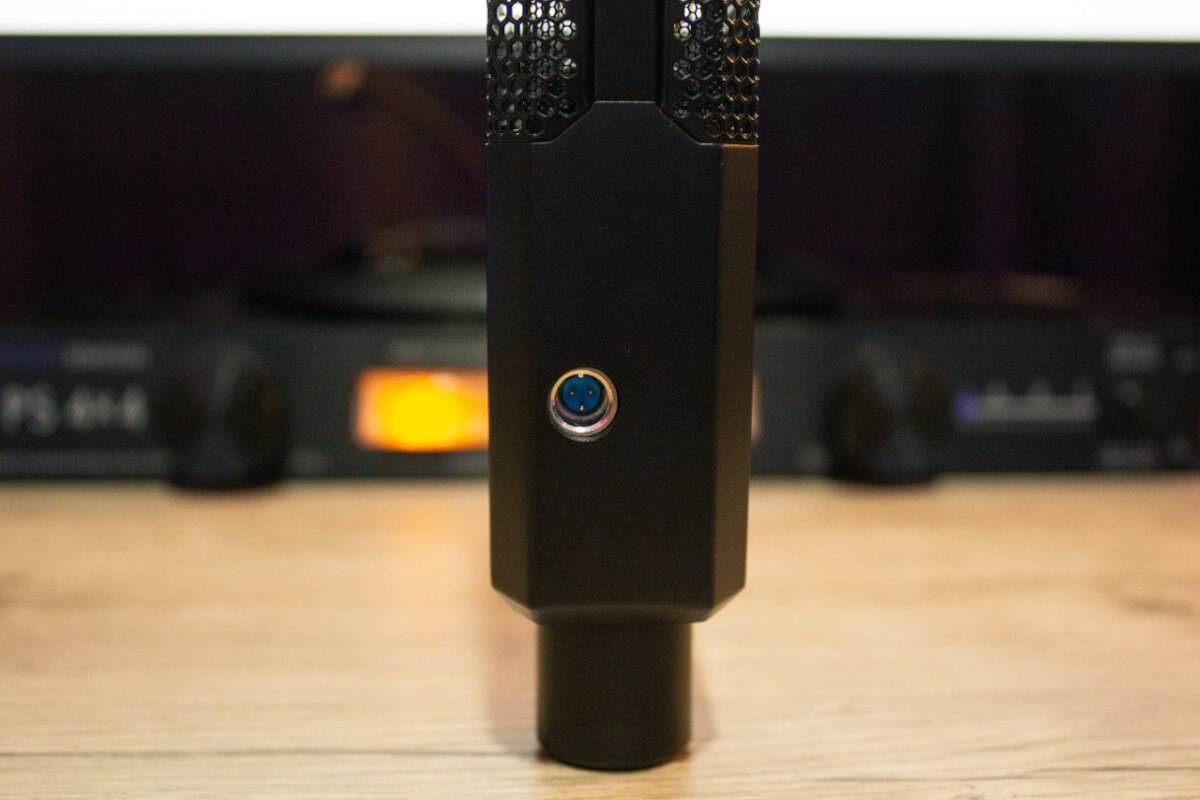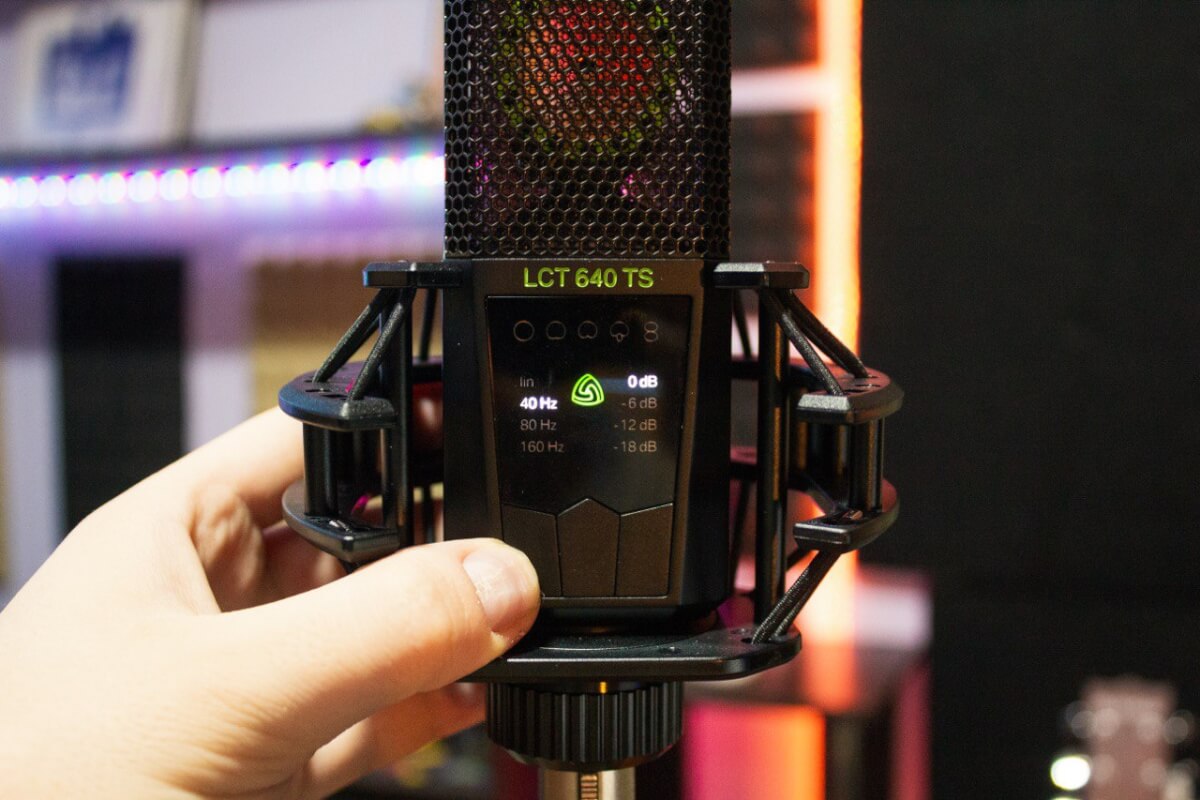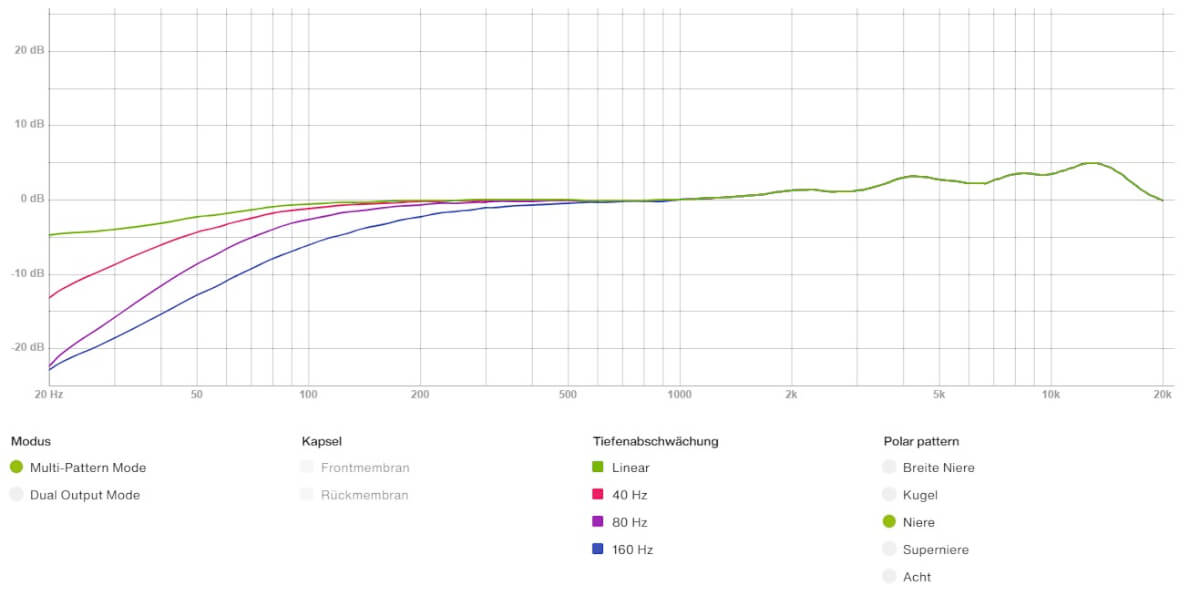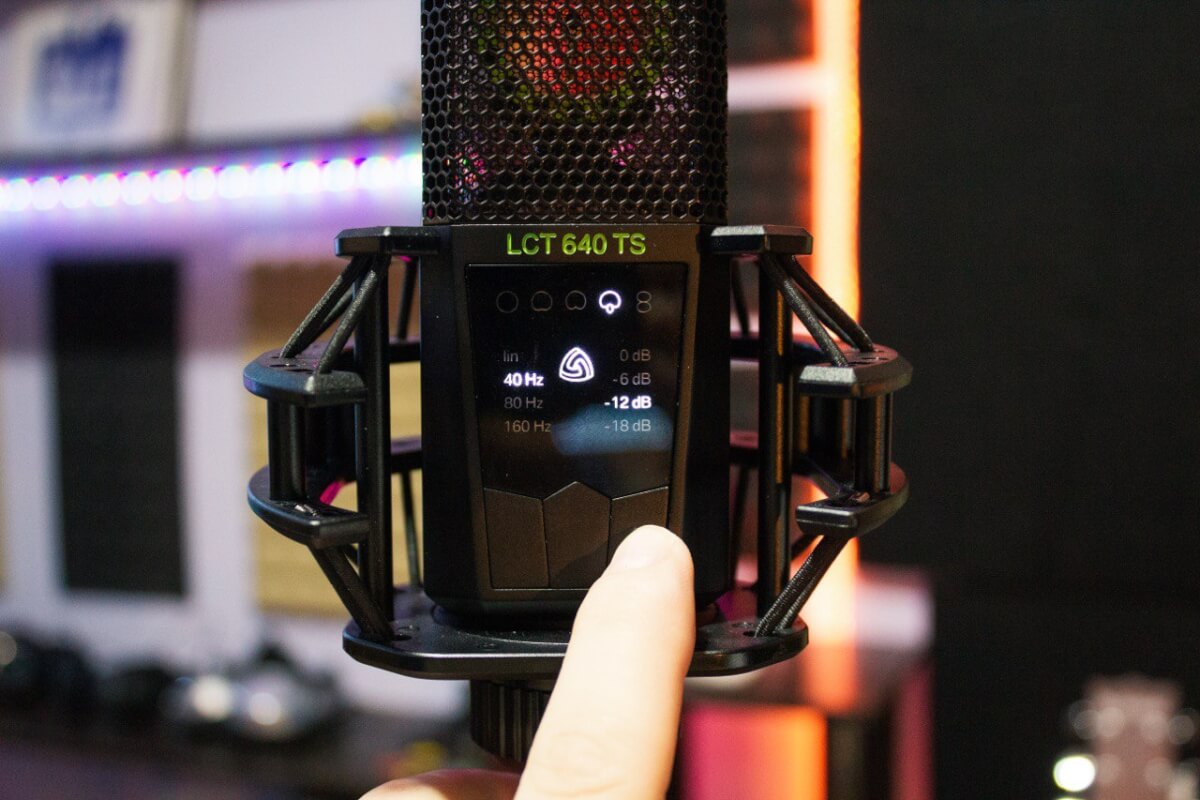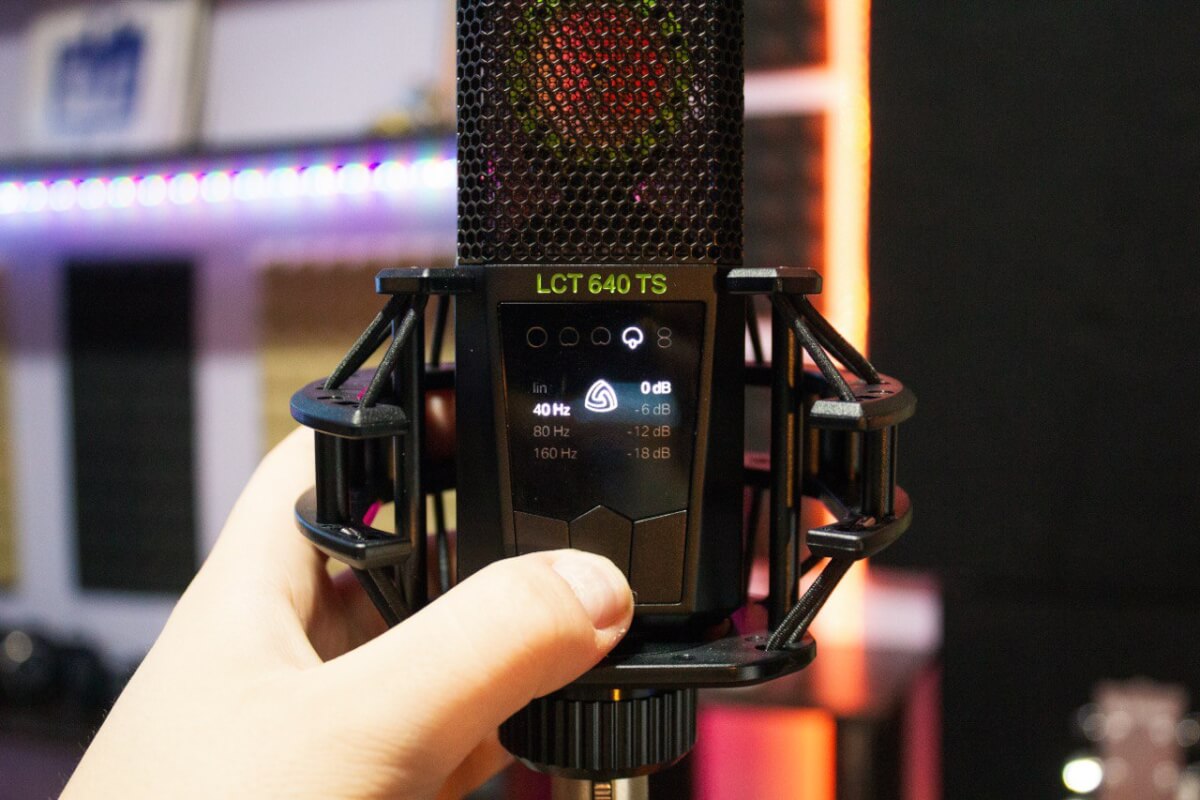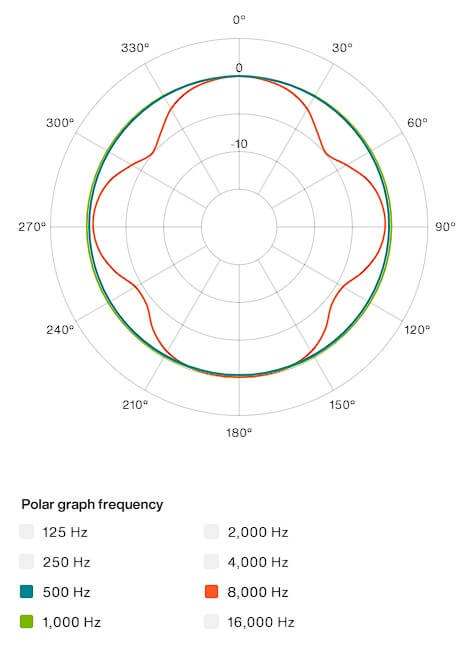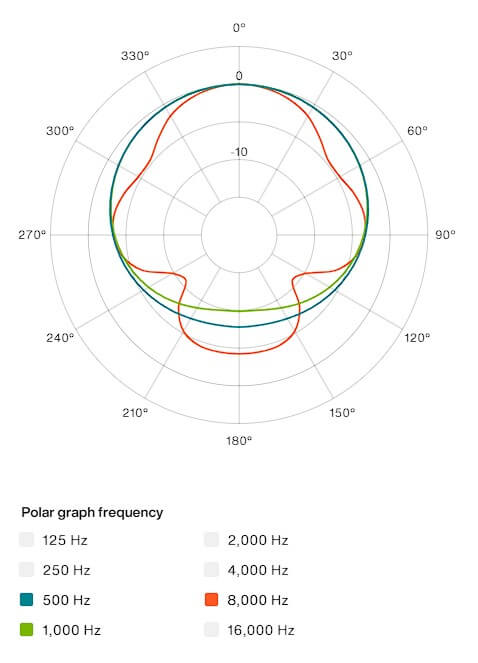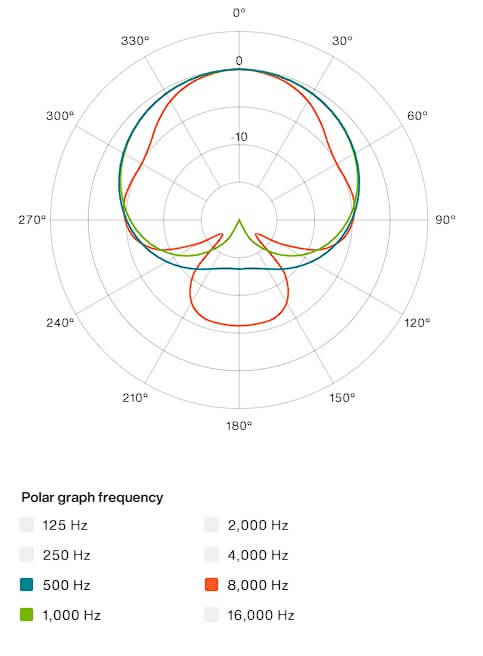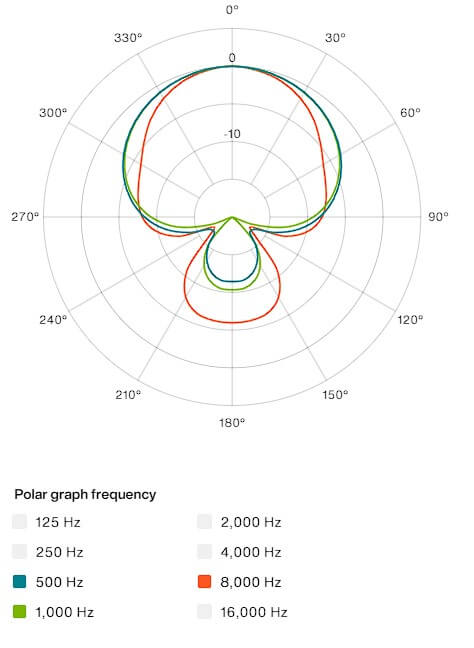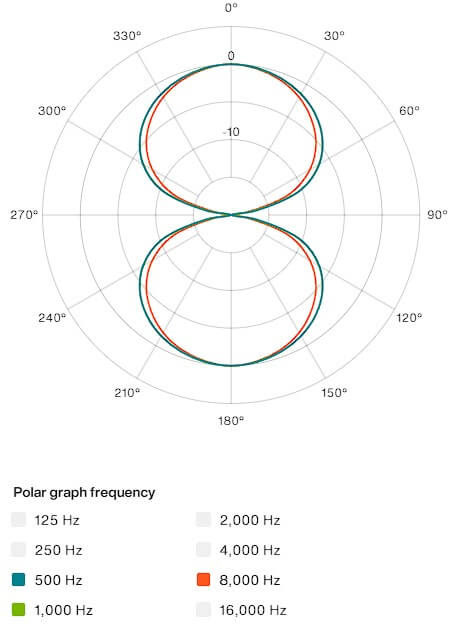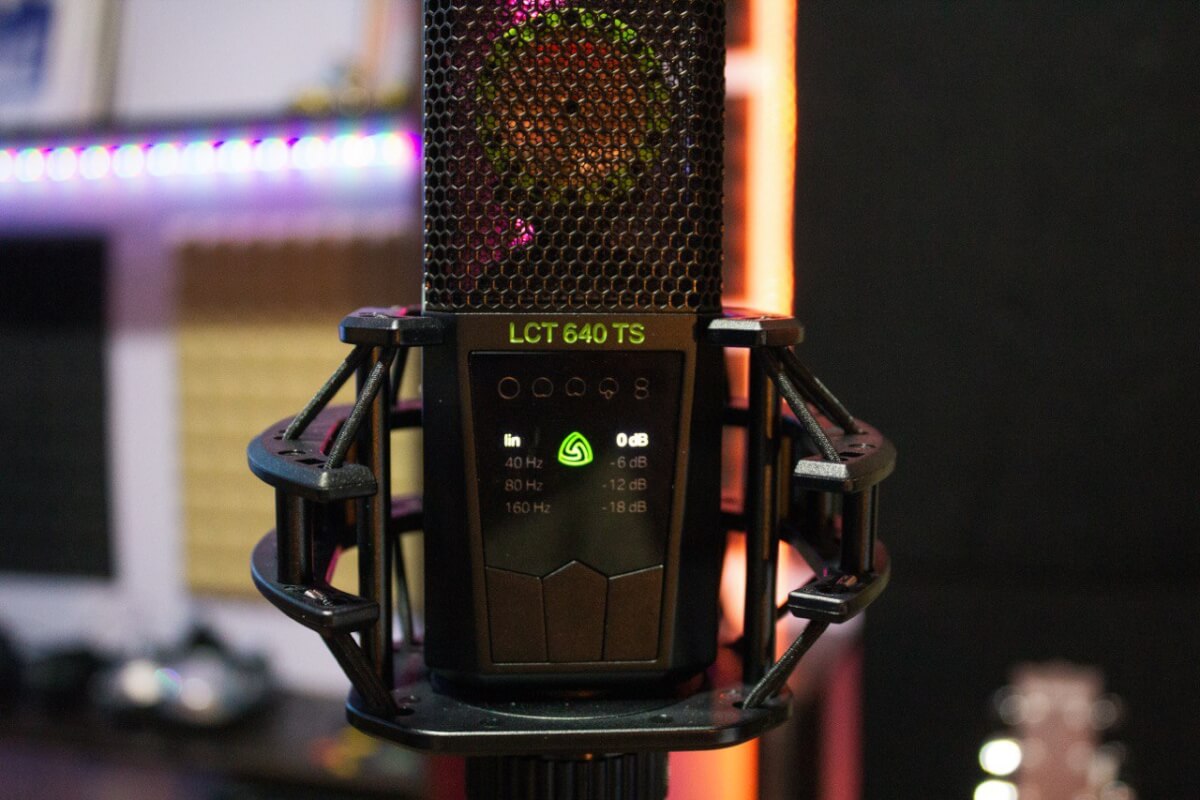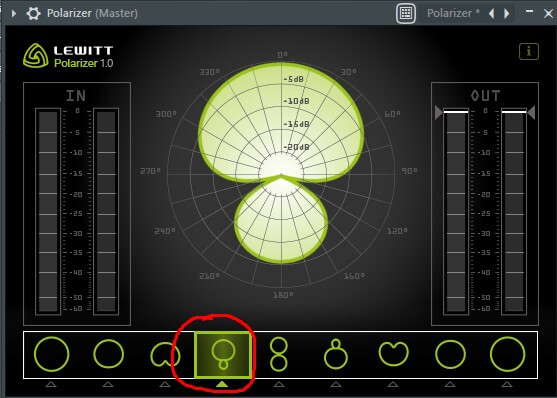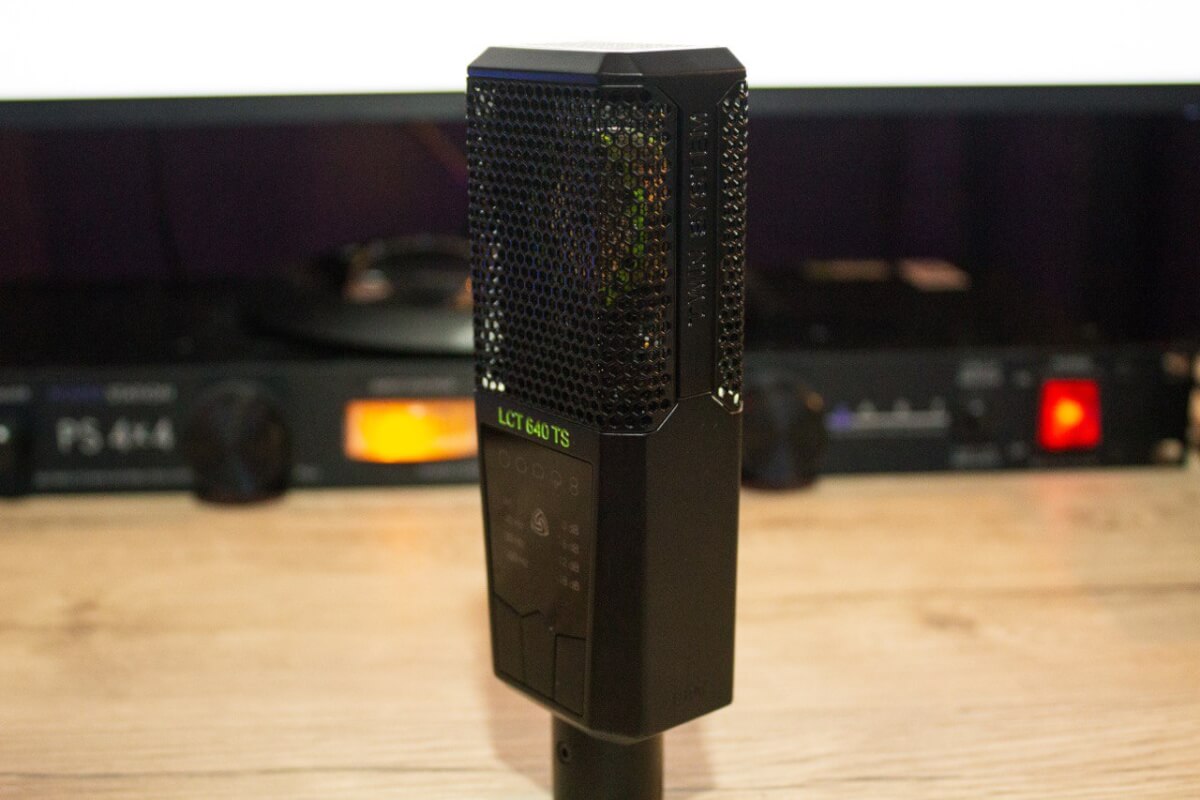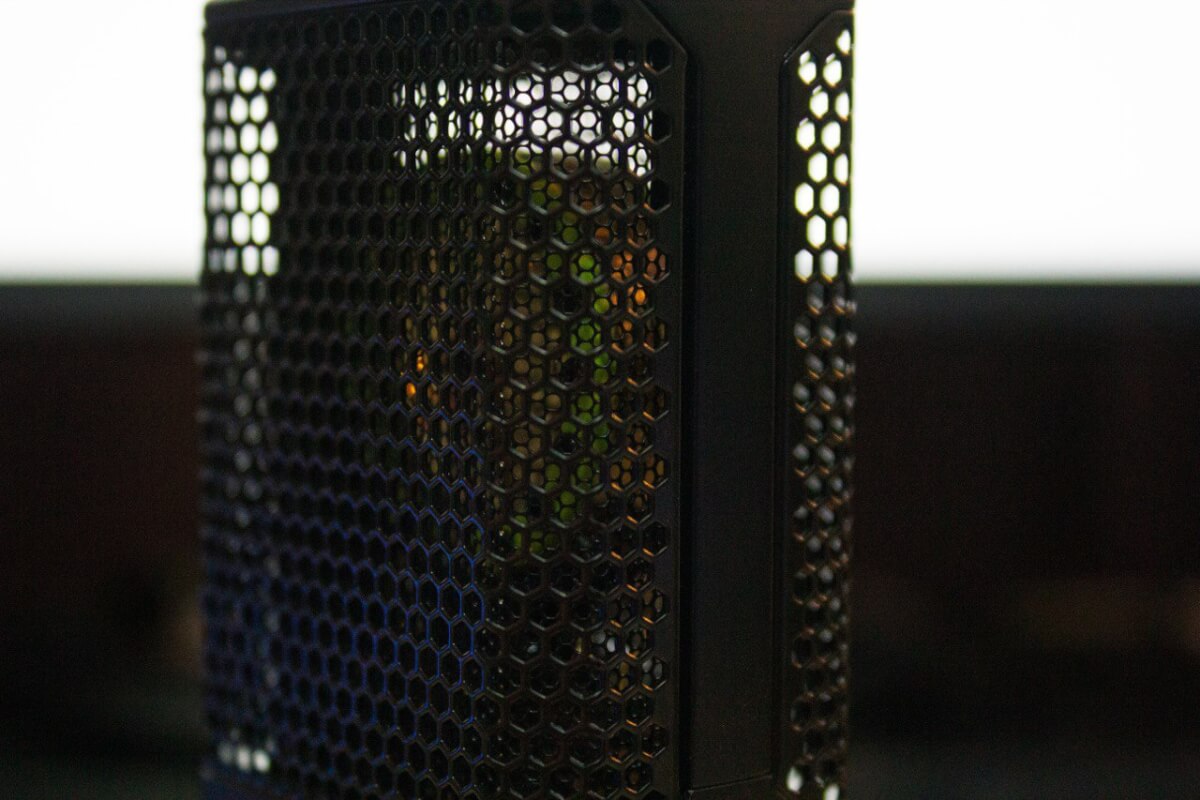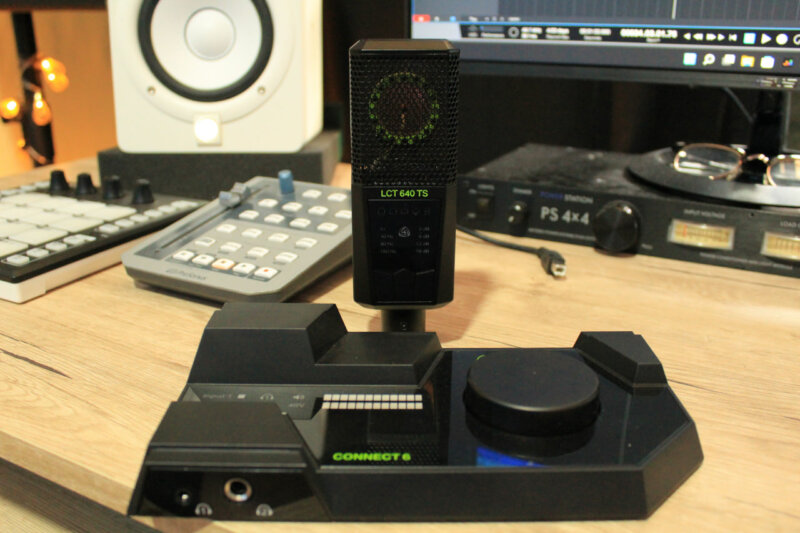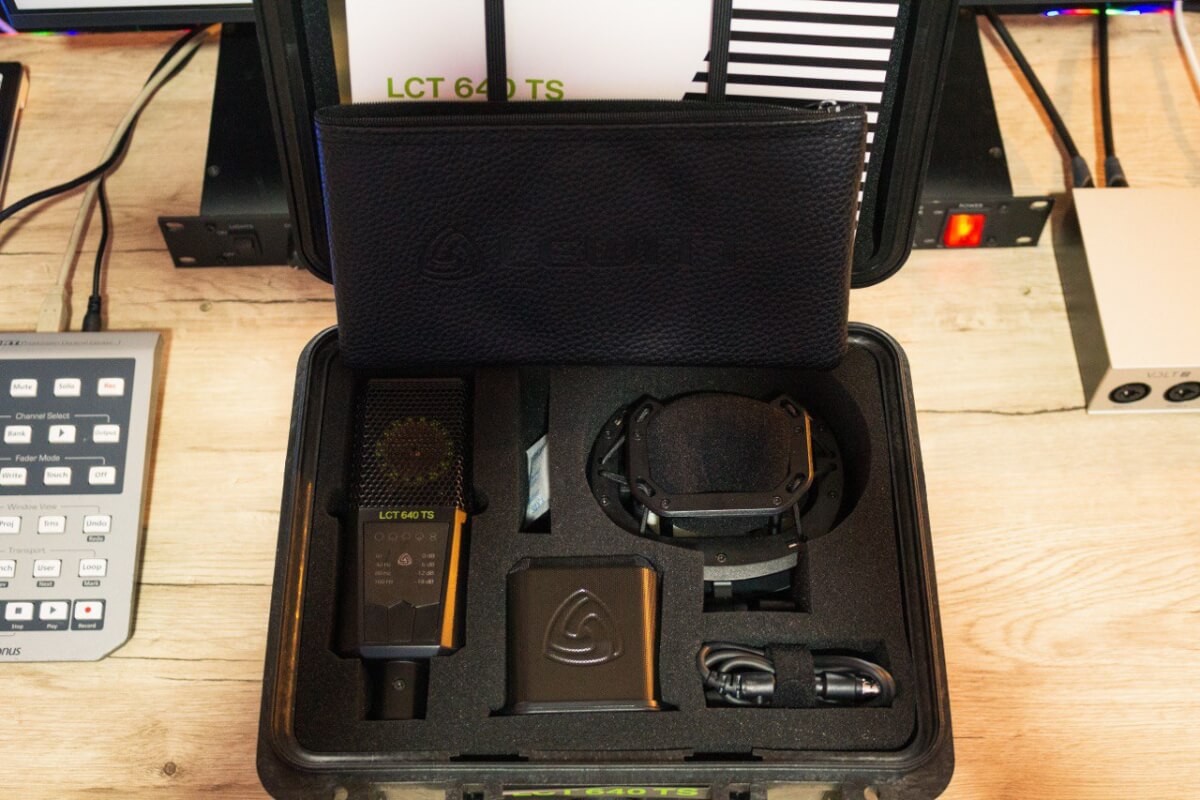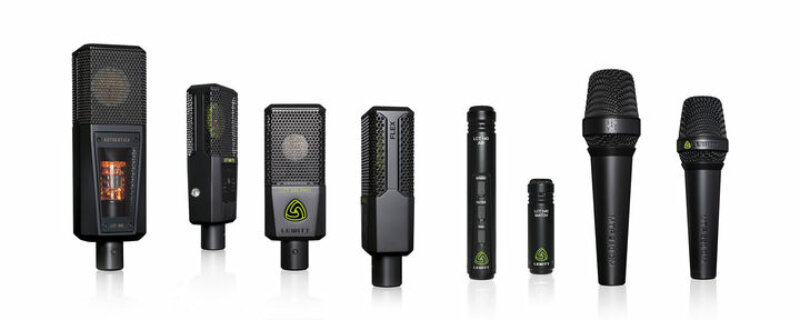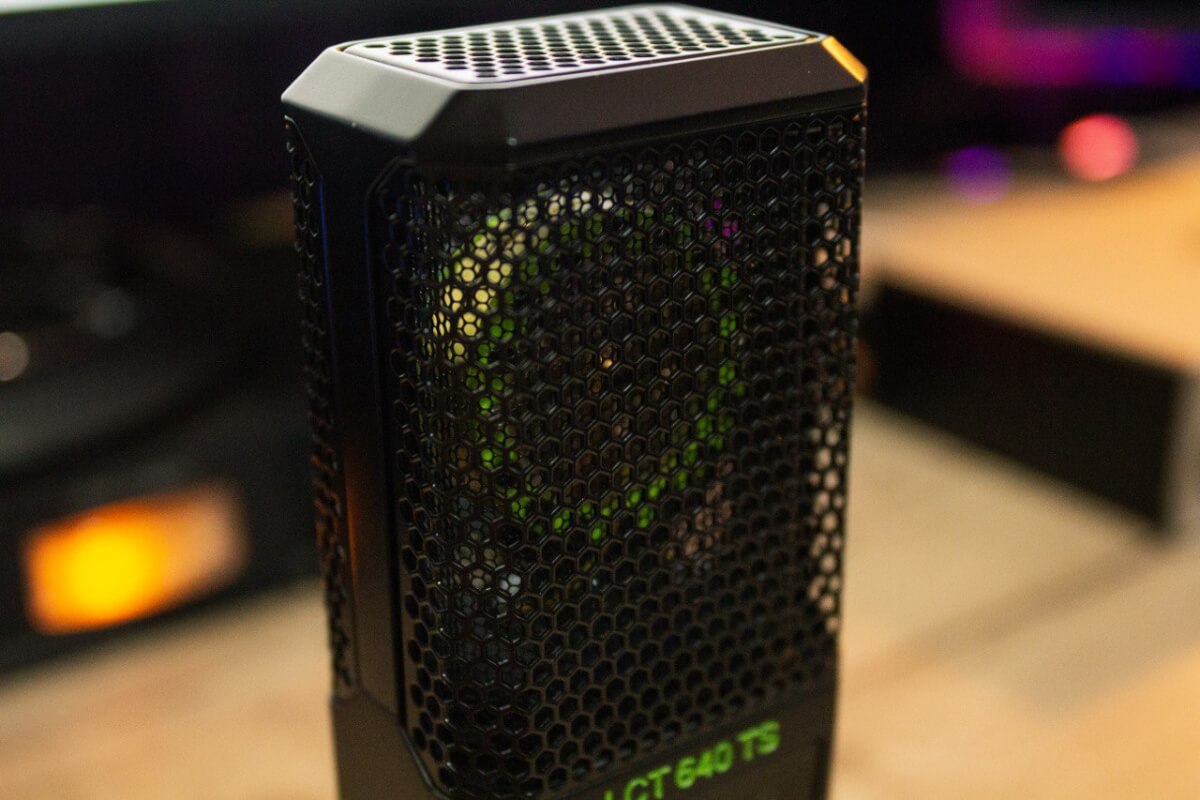Lewitt LCT 640 TS is a $1,000 wide-diaphragm condenser microphone with the ability to change the pattern (circle, figure-of-eight, supercardioid, cardioid, wide cardioid). You can connect two XLR inputs to this microphone and record the front and rear diaphragm capsule into two independent channels.
In this review, I’m going to tell you about the pros and cons of the Lewitt LCT 640 TS microphone. I will tell you about my impressions of the sound and whether this microphone is worth the claimed 1000$.
⚙️ Lewitt LCT 640 TS – specifications:
- Type: Capacitor with external polarization
- Aperture: gold plated 3 microns.
- Ø capsule: 1 inch (25.4 mm)
- Directionality: omnidirectional, wide cardioid, cardioid, super cardioid, figure eight
- Frequency range: 20 – 20,000 Hz
- Sensitivity: 31.4 mV/Pa, -30.1 dBV/Pa
- Signal-to-noise ratio: 84 dB (A)
- Max. SPL for 0.5% THD: 134 dB
- Dynamic range: 124 dB
- Weight of the microphone: 0.93 lbs. (424 g)
- Dimensions: 6.22 x 2.04 x 1.42 inches (158 x 52 x 36 mm)
- Case for storage and transportation
- Microphone
- Documentation
- Leather cover
- spider holder
- Metal pop filter
- Wind protection
- Plugs for mini-XLR
- Rubber wristband
- Mini-XLR cable
🤔 How does it sound?
The sound of the Lewitt LCT 640 TS is open, detailed and surprisingly accurate. I recently reviewed the Lewitt LCT 540S where I was impressed by exactly these qualities. Vocals and acoustic guitars sound great. Male vocals have a velvety low end, while female vocals have a bright and open top. Guitars can really come into their own with the right pickup point, and the ability to change the polar pattern helps you find the best sound for your guitar (I like to record in omnidirectional mode, for example).
Graph of the AFC in linear mode:
Below I have attached a recording of my voice and acoustic guitar recorded in Lewitt 640 TS with a soundcard Lewitt Connect 6. The recordings are unprocessed, at the same Gain level. For more examples, I recommend visiting the official Lewitt. website.
Lewitt LCT 640 TS – cardioid:
Lewitt LCT 640 TS – omnidirectional diaphragm:
Lewitt LCT 640 TS – figure eight:
Lewitt LCT 640 TS – cardioid, guitar recording:
-
- Low frequencies are massive, soft. Vocals have a sense of body (velvet low frequencies). There is no muttering or unpleasant component in the lower range. The microphone is not buzzy or muffled.
- The midrange is detailed. Articulation of the voice is excellent. The lower midrange (200 – 300 Hz) is moderate, no muddiness. The harsh region (2 – 4 kHz) is quiet and not harsh. It will work well with caustic or bright voices.
- The high frequencies are sharp, bright. There’s quite a lot of them. I don’t consider it a disadvantage. If the vocals are bright, you can work with a de-esser, and if the vocals are matte and muddy, the microphone will brighten them up and draw them out. I liked the high frequencies.
The sound I was satisfied with. This microphone will surprise those who move from Rode NT1-A or SE 2200. The sound is detailed, flexible for post-production. While I was testing this mic in my studio, I was recording clients and working with my musicians. The work was high quality and mixing was easy. It was as if the microphone was telling me what was best for it. To hang PulTec EQP-1A or to take MAAG Eq4 😆 .
🛒 Buy Lewitt 640 TS microphone:
📢 Controls and functionality
Dual XLR connection
Let’s start with the amazing. The Lewitt LCT 640 TS gives you the option of connecting two XLR inputs. In this mode, the front and rear diaphragm will be independent. You can record the signal into two different channels of your sound card or preamplifier. Phantom power will be required for each XLR. There is a Mini-XLR cable in the case. This function is activated by pressing the center button.
❗ Directional pattern selection will not be available in dual connection mode. ❗
This “Feature” will help to record stereo sound. For example, we will send the front diagram to the left ear, and the rear diagram to the right ear. Like in the recording test below. You can come up with interesting sound textures and sound design.
I think this feature is great for recording podcasts or streams with two participants who are not far from each other. It is also possible to Live record a vocalist and a guitarist. Like in the example below.
The dual XLR has a wide range of uses, I’ve only named a couple. Your imagination can find many more 😎 . If you don’t use the second mini XLR, I recommend to cover it with the rubber plug, which is included in the kit.
Low Cut Filter
Low Cut Filter cuts the low frequencies of the microphone signal and has 4 modes:
- Linear – linear, no bass cutoff
- 40 Hz – smooth decay from 40 Hz
- 80 Hz – smooth decay from 80 Hz
- 160 Hz – smooth decay from 160 Hz
Switching is done with the left button, with a single press. The selected filter is highlighted in white.
Attenuator
The attenuator helps reduce the volume of the microphone input signal. It can be used when recording loud or dynamic sound sources. The attenuator has 4 modes:
- 0 dB – linear
- -6 dB – signal attenuation by 6 dB
- -12 dB – attenuation of the signal by 12 dB
- -18 dB – attenuation of the signal by 18 dB
The attenuator is switched by pressing the right button on the microphone. You must wait about 10 seconds for the attenuator to turn on.
Directional pattern change
The Lewitt LCT 640 TS has an exchangeable directivity pattern. It can be switched via the center button. The selected pattern is highlighted in white. There are 5 directional patterns available:
- Omnidirectional (Circle)
- Wide cardioid
- Cardioid
- Supercardioid
- Eight
❗ When switching between diagrams, you must wait up to 20 seconds for the microphone to switch to the selected diagram mode. ❗
Changing the directional pattern gives you the freedom of imagination when recording. For example, I liked to record vocals in supercardioid mode, and record acoustic guitar in omnidirectional mode (it gives a little bit of living space in the signal).
Additional settings
Among the listed and explicit settings, there are implicit ones you should be aware of:
- Pressing the left button for more than two seconds locks all buttons. Press the left button again to unlock.
- Pressing the right button activates the Clipping History mode. In this mode, the indicator light starts flashing white and green. If at this point you are broadcasting sound into the microphone and you are clipping (large input signal) the center light will flash red. This feature will help you fine tune the microphone in the field.
Microphone control is clear and convenient. All information is displayed and highlighted. The manual has all the key designations. I recommend always to read before using the microphone 😎 .
VST Plugin POLARIZER
Polarizer is a plug-in that changes the directivity of the signal in real time. It can be used even after the recorded material, i.e. with a recorded vocal or instrument track. This plug-in is developed by Lewitt.
By moving the slider we select the available directional patterns:
- Omnidirectional (Circle)
- Wide cardioid
- cardioid
- Supercardioid
- Eight
- Supercardioid rear
- Cardioid rear
- Wide cardioid rear
- Omnidirectional (Circle)
The plug-in is interesting to use. I used it when recording with Lewitt LCT 640 TS and afterwards with recorded material. You can achieve interesting sounds, especially of different instruments (Guitar, percussion). This plug-in will sound best if you record in omnidirectional mode on a Lewitt 640 TS microphone. There is one BUT 😉 . I have never used it practically in my projects, just dabbled and that’s all 😆 . For me it is enough to choose the directional pattern of the microphone itself.
💎 Appearance and build quality
Appearance. The Lewitt LCT 640 TS looks nice. The design is strict and minimalistic. The color scheme is black with a green logo and model name. The front panel has acrylic glass under which there are indicators and control buttons.
The microphone capsule is protected by a double metal grill. An outer large mesh and an inner one with a smaller cross-section. The capsule is confidently protected, that’s the main thing.
Build at an excellent level. The microphone is completely metal. The quality of materials is reference. Components are well fitted, nothing protrudes, does not crunch, does not bend under your fingers.
🎙️ Kit with microphone
The Spider holder included is made of plastic. The microphone sits securely and is fixed with a metal ring. Its function as a holder and anti-vibration element performs well. This spider is completely similar to the one included with Lewitt 540 S.
The Windshield and iron pop filter are no different than those with the Lewitt 540 S and Lewitt 440 Pure. From experience, I will say that the wind shield can be used to cover the mic from dust or to record speech. Pop filter on a magnet, docks to the spider, its role performs confidently at a distance of the vocalist from 10 cm. from the microphone.
Although it looks cool, but the good old cloth filter performs better 😎 .
🎤 Lewitt microphones
Lewitt has a wide selection of microphones. Their lineup includes classic condenser microphones and tube microphones. Instrument microphones and dynamic microphones. I’ll give you a few examples:
- The Lewitt 240 PRO is a budget electret microphone for aspiring musicians and producers ($170).
- Lewitt 440 Pure is a mid-budget condenser microphone with a neutral sound. (300$).
- The Lewitt 540 S is a mid-budget microphone with great sound and low self-noise ($700).
- The Lewitt LCT 640 TS is an expensive microphone with great sound and a replaceable diaphragm and dual XLR connection ($1,000).
- The Lewitt LCT 840 is an expensive tube condenser microphone for recording vocals and instruments. (1200$).
- The Lewitt LCT 040 MATCH is a small-diaphragm instrument microphone ($100).
- Lewitt MTP 550 DM is a dynamic microphone for vocals ($150).
The Lewitt microphone lineup is very broad, and I’ve listed just a few. For a complete catalog, I recommend visiting the Lewitt website.
🏆 Bottom line
The Lewitt LCT 640 TS is a professional microphone for vocalists, musicians and recording studios. This instrument can become a versatile microphone in your practice. Recording vocals, dictation, recording instruments at an excellent level. Changeable directional patterns expand the possibilities of using the microphone and give you the freedom of imagination when recording.
I’ve used Lewitt 240 Pro, Lewitt 440 Pure, Lewitt 540 S and have been satisfied with the sound. The Lewitt LCT 640 TS was a new level in recording for me. I have never had such a flexible microphone before. I can completely cover all my needs with it.
The Lewitt LCT 640 TS fully justifies the $1000$ price tag and would be a great choice for professionals 😎 .
I look forward to your comments below, if you have such a microphone, share your experience will be interesting to read 😉 .
✅ Briefly about Lewitt
Roman Pershon is the man who founded Lewitt. After reaching the role of project manager at AKG, Roman felt empowered to create something of his own. In 2008 he quit his job at AKG and went in search of companies that could help him create a small miracle. In Australia he met Ken Young, who believed in Roman’s ideas and so began the story of the “green” Lewitt company.


